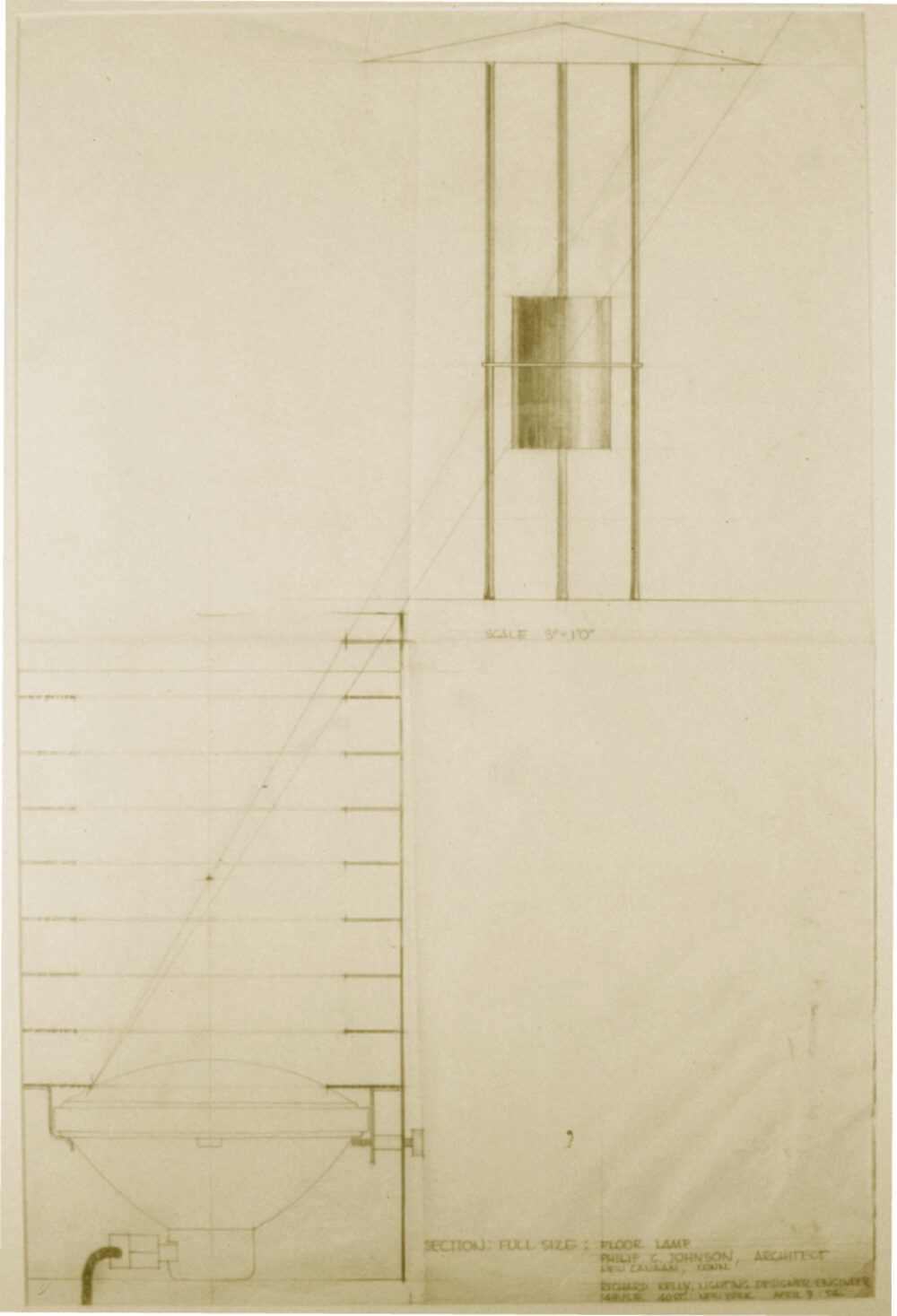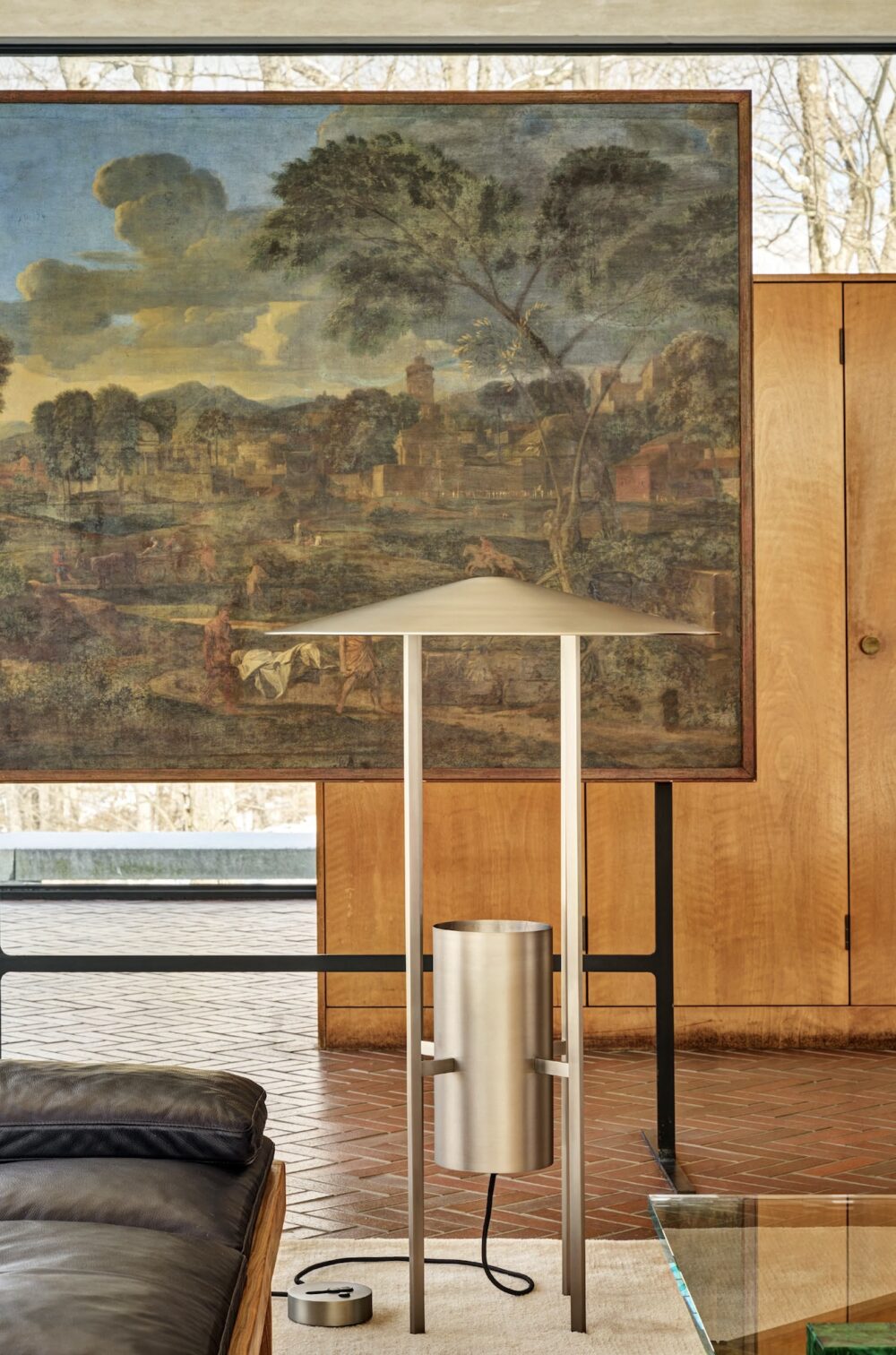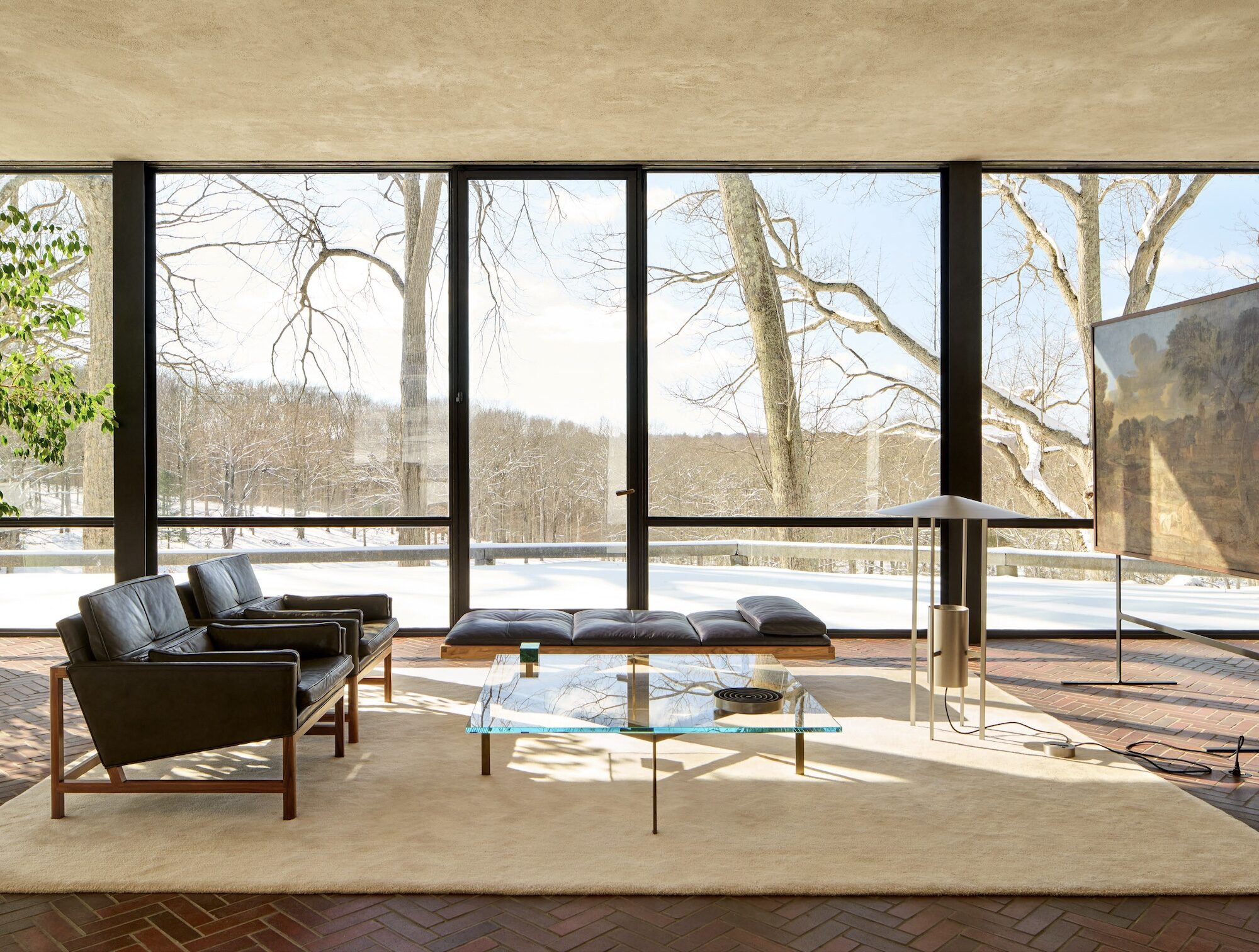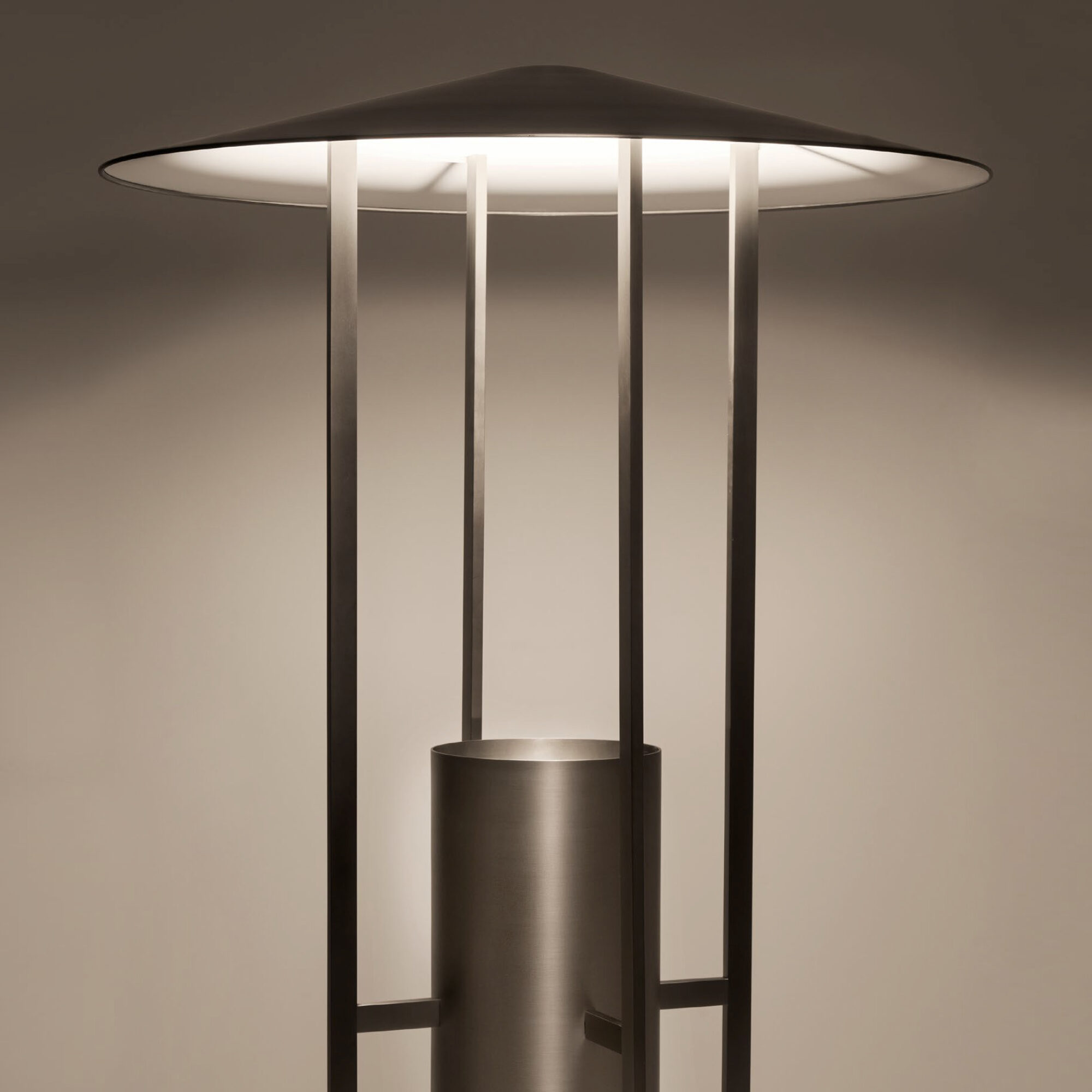





When Philip Johnson collaborated with Richard Kelly to create a light for the Glass House in the 1950s, the resulting design became a significant part of some of the century’s most notable private interiors. It was a revolutionary approach to lighting a room, within a radical new form of architecture.
The lamp had a purity of form and function that made it fit harmoniously within these new spaces. It also conjured a soft, sensual mood. This year BassamFellows reissues this iconic floor lamp, which has been out of production since 1967.
Image: Original drawing of Floor Lamp. Three leg version. 1952.

When the Glass House was completed in 1949, the sightlines from Philip Johnson’s transparent pavilion transformed the way people experienced architecture. Both outside and inside this glass box, everything was visible–from the shifting colors of the surrounding woodlands to the iconic daybed designed by Johnson’s mentor, Mies van der Rohe. It was a radical and refreshing way to live.
But when night fell, the absence of interior walls and the home’s transparency presented a unique challenge. The living area was defined only by a rug and an arrangement of furniture, not by partitions, and traditional lighting simply didn’t work. Also, the reflective glass created a conundrum, like trying to take a photograph in a mirror.
Initially Johnson lived with a tall candelabra lamp but found this unsatisfactory. Seeking a better solution, he collaborated with lighting designer Richard Kelly. Drawing on his knowledge of stage lighting, Kelly helped design a lamp that turned the conventional approach on its head. Instead of overhead lighting, the lamp featured a concealed, high-powered bulb positioned near the floor. Its light was directed upward, then reflected downward by the underside of a conical shade. The result was a soft, warm pool of light that gently illuminated the seating area—without casting harsh reflections on the glass walls.
More than a fixture, the lamp was like a small piece of architecture within the larger structure. It was also fitted with a dimmer, allowing Johnson to precisely control the light levels and maintain the delicate balance between interior and exterior.


The Glass House. 2025. Daybed, Wood Frame Lounge Chairs, and Plank Coffee Table by BassamFellows. Reissue of Johnson/Kelly Floor Lamp, satin stainless steel.

© Ormond Editions, all rights reserved
Paramètres de confidentialité –
Politique de confidentialité